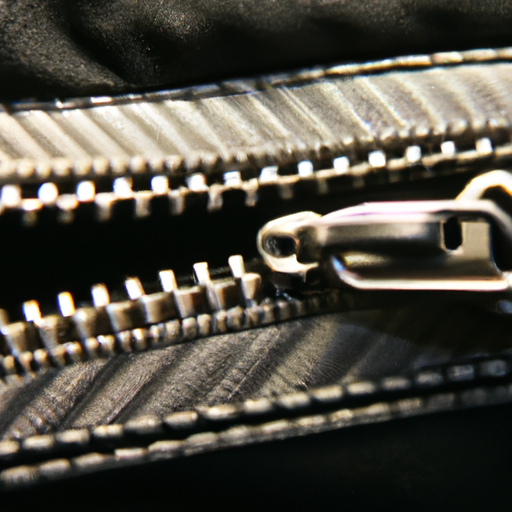Can You Check A Backpack
Imagine you’re about to embark on a journey and excitement fills the air. As you make your way to the airport, your mind starts wandering, and you can’t help but wonder – can you check a backpack? It’s a common question that often arises, especially for adventurous souls who love exploring new destinations. In this article, we’ll explore the regulations and guidelines surrounding backpacks and provide you with all the information you need to ensure a smooth and hassle-free travel experience. So, grab your backpack and let’s delve into the world of travel restrictions together.
Legal Considerations
Airline Regulations
When it comes to traveling with a backpack, it’s important to be aware of the airline regulations regarding carry-on and checked baggage. Each airline has its own specific rules and restrictions, so it’s advisable to consult the airline’s website or contact them directly to ensure you are in compliance. Some airlines may allow backpacks as carry-on items, while others may require them to be checked. It’s also important to note any size or weight limitations that may apply.
TSA Guidelines
In the United States, the Transportation Security Administration (TSA) is responsible for ensuring the safety of passengers and preventing prohibited items from being brought onboard aircraft. The TSA has specific guidelines for the screening of backpacks at security checkpoints. These guidelines include removing laptops and large electronics from the backpack and placing them in a separate bin for X-ray screening. Additionally, liquids, gels, and aerosols must be in containers of 3.4 ounces (100 milliliters) or less and placed in a clear, quart-sized bag.
International Travel Restrictions
If you are planning to travel internationally, it’s crucial to familiarize yourself with the specific travel restrictions and regulations of the countries you will be visiting. Different countries may have different rules regarding the types of items that can be brought into the country or carried onboard an aircraft. It’s advisable to check the official websites of the countries or contact their embassies for the most up-to-date information. Failing to comply with these regulations could result in delays, fines, or even the confiscation of your backpack or its contents.
Preparation for Baggage Check
Ensuring Baggage Readiness
Before heading to the airport, it’s important to ensure that your backpack is ready for baggage check. This includes removing any unnecessary items, organizing your belongings, and ensuring that all zippers are securely fastened. It’s also a good idea to double-check that you are not carrying any prohibited items, as this could result in delays or confiscation. By taking the time to prepare your backpack for baggage check, you can help streamline the security screening process and avoid any issues.
Removable Items and Valuables
When going through baggage check, it’s important to remember that TSA agents may need to inspect the contents of your backpack. To make the process smoother, consider packing any removable items, such as laptops or tablets, in a dedicated compartment that can be easily accessed and removed. It’s also a good idea to keep any valuable items, such as jewelry or cash, with you rather than in your checked backpack.
Securely Fastening Zippers
To prevent any accidental spills or damage to your belongings, it’s essential to securely fasten all zippers on your backpack. Loose or open zippers can make it difficult for TSA agents to properly inspect the contents of your backpack, potentially leading to additional screenings or delays. By securely fastening all zippers, you can help ensure a smooth and efficient baggage check process.
Packing Fragile Items
If you are traveling with fragile items in your backpack, it’s important to take extra precautions to protect them during the baggage check process. Consider wrapping fragile items in clothing or placing them in protective cases to minimize the risk of damage. It’s also a good idea to clearly label any fragile items on the outside of your backpack to alert TSA agents to handle them with care.
Backpack Inspection Process
Initial Baggage Screening
The backpack inspection process typically begins with an initial screening conducted by TSA agents. During this screening, your backpack will pass through an X-ray machine, allowing agents to examine its contents. It’s important to ensure that your backpack is free from clutter and any items that may obstruct the X-ray view. This will help agents to quickly and accurately assess the contents of your backpack.
X-ray Scanning
X-ray scanning is a crucial step in the backpack inspection process. It allows TSA agents to identify any potentially prohibited or dangerous items that may be concealed within your backpack. To ensure a smooth screening process, it’s important to remove any large electronics, such as laptops, from your backpack and place them in a separate bin for scanning. Additionally, any liquids, gels, or aerosols should be removed and placed in a clear, quart-sized bag for separate screening.
Physical Inspection
In some cases, TSA agents may need to conduct a physical inspection of your backpack. This may happen if the X-ray scan reveals any items that require further examination or if there are any suspicious or questionable items in your backpack. During a physical inspection, TSA agents may need to open your backpack and manually inspect its contents. It’s important to cooperate with the agents and follow their instructions to ensure a smooth and efficient screening process.
Prohibited Items
Sharp Objects
When it comes to backpacks, there are certain items that are strictly prohibited from being carried onboard an aircraft. Sharp objects such as knives, scissors with blades longer than 4 inches, and box cutters are not allowed in either carry-on or checked baggage. These items pose a potential threat to the safety of passengers and crew members and must be left behind or stored in a different manner.
Explosives and Flammables
Explosives, flammables, and any items that could potentially be used to start a fire are strictly prohibited from both carry-on and checked baggage. This includes items such as fireworks, flares, gasoline, and lighter fluid. These items pose a significant safety risk and can potentially cause a catastrophic event onboard an aircraft.
Liquids, Gels, and Aerosols
When it comes to liquids, gels, and aerosols, there are certain restrictions that must be followed. Each container must be 3.4 ounces (100 milliliters) or less and all containers must fit into a clear, quart-sized bag. This includes items such as shampoo, conditioner, toothpaste, and lotion. It’s important to properly pack these items and remove them from your backpack during the screening process to ensure compliance with TSA guidelines.
Weaponry and Firearms
Weapons and firearms are strictly prohibited from being carried onboard an aircraft. This includes firearms, ammunition, stun guns, and martial arts weapons. These items must be securely stored and properly declared if you are traveling with them. If you are unsure about the regulations surrounding firearms or other weaponry, it’s best to consult with the airline or TSA directly for guidance.
Duty-Free Items
If you have purchased duty-free items, such as alcohol or perfume, these items may be subject to additional screening or restrictions. It’s important to check with the airline or TSA to determine the specific rules and requirements for transporting duty-free items. Failure to comply with these regulations could result in the confiscation of your items.
Essential Travel Items
Identification and Travel Documents
One of the most important items to pack in your backpack is your identification and travel documents. This includes your passport, driver’s license, boarding pass, and any other necessary identification or travel permits. It’s crucial to have these documents readily accessible, as you will likely need to present them multiple times throughout your journey.
Electronic Devices
In today’s digital age, electronic devices have become essential travel companions. From smartphones to laptops, these devices help keep us connected and entertained during our travels. When packing electronic devices in your backpack, it’s important to ensure that they are adequately protected. Consider using protective cases or sleeves to prevent damage during transit.
Medications and Personal Care Items
If you require any medications or personal care items, it’s important to pack them in your backpack. This includes prescription medications, over-the-counter medications, and any necessary medical supplies. It’s advisable to pack these items in a dedicated pouch or container for easy access during security screenings.
Clothing and Toiletries
When it comes to packing clothing and toiletries, it’s important to be mindful of space limitations and any potential restrictions. Roll or fold your clothes neatly to maximize space and consider using packing cubes to keep everything organized. Additionally, ensure that any liquids or gels you pack, such as shampoo or toothpaste, adhere to the TSA guidelines for carry-on items.
Travel Adapters and Chargers
If you are traveling internationally, it’s important to pack a travel adapter and chargers for your electronic devices. Different countries have different plug configurations, so a travel adapter will ensure that you can charge your devices no matter where you are. It’s also a good idea to pack spare charging cables in case one gets lost or damaged during your travels.
Tips for Backpack Organization
Utilizing Compartments and Pockets
When it comes to organizing your backpack, utilizing the various compartments and pockets can be a game-changer. This will help you keep your belongings organized and easily accessible. Consider designating specific compartments or pockets for different types of items, such as electronics, toiletries, and clothing.
Rolling or Folding Clothes
Maximizing space in your backpack is essential, especially if you are traveling with limited luggage. To make the most of the available space, try rolling your clothes instead of folding them. Rolling clothes not only saves space but also helps to minimize wrinkles and creases. It’s also a good idea to place heavier items at the bottom of your backpack to distribute the weight more evenly.
Using Packing Cubes
Packing cubes are a great tool for keeping your backpack organized and maximizing space. These small, zippered pouches come in various sizes and can be used to compartmentalize your belongings. By using packing cubes, you can easily locate specific items and keep your backpack neat and tidy throughout your journey.
Separating Clean and Dirty Items
When traveling, it’s important to separate clean and dirty items to prevent cross-contamination and unpleasant odors. Consider packing a laundry bag or a waterproof pouch for dirty clothes. This will help keep your clean items fresh and allow for easy laundering once you reach your destination.
Maximizing Space
To make the most of the available space in your backpack, think strategically about how you pack your items. Utilize every nook and cranny by filling empty spaces with smaller items, such as socks or accessories. It’s also advisable to wear your bulkiest items, such as jackets or boots, instead of packing them to save space.
Considerations for Electronics
Insulating Fragile Devices
Electronics, especially fragile devices such as laptops or cameras, require extra protection during baggage check. Consider using a padded sleeve or case to insulate these devices from potential impacts. This will help minimize the risk of damage during transit and the screening process.
Battery and Power Bank Safety
Batteries and power banks are essential for keeping our electronic devices charged during travel. However, it’s important to follow safety guidelines when packing and transporting these items. Ensure that all batteries and power banks are carried in your carry-on luggage rather than checked baggage. This is due to the risk of fire associated with lithium-ion batteries, which are commonly found in electronic devices.
Security Screening for Laptops
Laptops are subject to additional security screening procedures at airports. When going through security, be prepared to remove your laptop from its case and place it in a separate bin for X-ray screening. It’s also advisable to power off your laptop before going through security to facilitate the screening process.
Carrying Charging Cables
When traveling with electronic devices, it’s important to pack the necessary charging cables in your backpack. Different devices may require different types of cables, so it’s advisable to carry a versatile charging cable that can be used with multiple devices. This will ensure that you can keep your devices charged and ready to use while on the go.
Security and Theft Prevention
Locking Zippers and Compartments
To help prevent theft and secure your belongings, it’s a good idea to invest in backpacks that have lockable zippers and compartments. By using small padlocks or TSA-approved locks, you can deter potential thieves from accessing your backpack. This provides an added layer of security and peace of mind during your travels.
Using TSA-Approved Locks
If you are traveling to or within the United States, it’s important to use TSA-approved locks on your backpack. These locks are designed to be easily opened and relocked by TSA agents during the screening process. By using TSA-approved locks, you can secure your backpack while still allowing for necessary inspections.
Securing Belongings in Public Areas
When traveling, particularly in crowded public areas such as airports or train stations, it’s important to remain vigilant and take steps to secure your belongings. Keep your backpack close to you at all times and be mindful of your surroundings. Avoid leaving your backpack unattended or easily accessible to others. By taking these precautions, you can minimize the risk of theft or loss.
Personal Safety Awareness
In addition to securing your belongings, it’s important to maintain personal safety awareness during your travels. Be cautious of anyone acting suspiciously or approaching you with ill intentions. Trust your instincts and immediately report any suspicious activity or individuals to the appropriate authorities. Your personal safety should always be a top priority.
Inspection Outcome Scenarios
Passing Through Security
In the ideal scenario, your backpack will pass through security without any issues or additional screenings. This means that you have successfully complied with all regulations and restrictions, and your backpack has been deemed safe for travel. You can proceed to your gate and board your flight with peace of mind, knowing that your backpack has been thoroughly checked and is in compliance with all security measures.
Selected for Secondary Screening
In some cases, your backpack may be selected for secondary screening. This may happen if there are any questionable items or if the initial screening raises any concerns. During a secondary screening, TSA agents will conduct a more thorough physical inspection of your backpack. It’s important to remain calm and cooperative during this process, as it is a standard security procedure designed to ensure the safety of all passengers.
Confiscated Items
If you are found to be carrying any prohibited items in your backpack, they will be confiscated by TSA agents. It’s important to familiarize yourself with the list of prohibited items and ensure that your backpack is free from any such items. Confiscated items will not be returned to you, and you may face additional consequences, such as fines or legal action, depending on the severity of the offense.
Questionable Items
In some cases, TSA agents may come across items in your backpack that are not explicitly prohibited but raise questions or concerns. This may result in additional questioning or closer inspection of the items. It’s important to be prepared to provide explanations or additional information if requested by TSA agents. Cooperating with the agents will help expedite the screening process and ensure that you can continue your journey smoothly.
Tips for Smooth Baggage Check
Arriving Early
To ensure a smooth baggage check experience, it’s important to arrive at the airport early. This will give you ample time to check your backpack, go through security screenings, and reach your gate without feeling rushed or stressed. Arriving early also allows for any unforeseen delays or complications that may arise during the process.
Following Instructions
During the baggage check and security screening process, it’s crucial to listen and follow the instructions given by TSA agents. This includes placing your backpack in the designated screening area, removing any required items for separate screening, and cooperating with agents during the physical inspection. By following instructions, you can help facilitate a smooth and efficient process.
Decluttering and Simplifying Packing
To streamline the baggage check process, it’s advisable to declutter and simplify your packing. Remove any unnecessary items or items that are not allowed in either carry-on or checked baggage. This will help expedite the screening process and minimize the risk of delays or confiscation. It’s also a good idea to neatly organize your belongings to allow for easy inspection.
Knowing Airline-specific Rules
Each airline may have its own specific rules and regulations regarding baggage check and security screenings. It’s important to familiarize yourself with these rules before your journey to ensure that you are in compliance. This includes size and weight limitations for both carry-on and checked baggage, as well as any specific requirements for the screening process. Knowing and following these rules will help ensure a smooth and hassle-free baggage check experience.
By understanding and following the legal regulations, preparing your baggage properly, organizing your backpack, and adhering to security guidelines, you can help ensure a smooth and stress-free backpack check process. By being proactive and prepared, you can minimize any potential issues or delays and focus on enjoying your journey. Remember, the key to a successful backpack check is to stay informed, be prepared, and cooperate with the TSA agents throughout the process.




